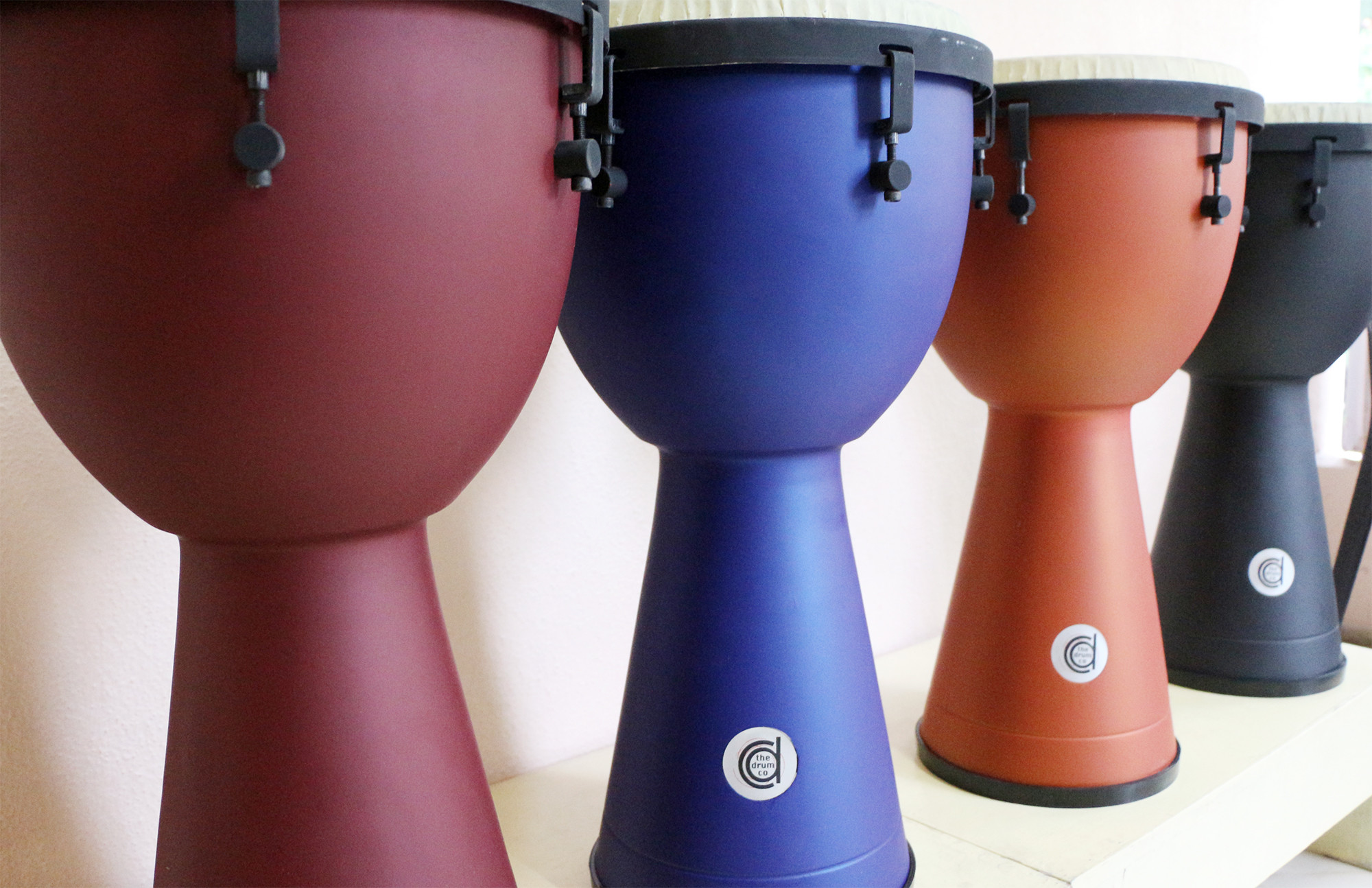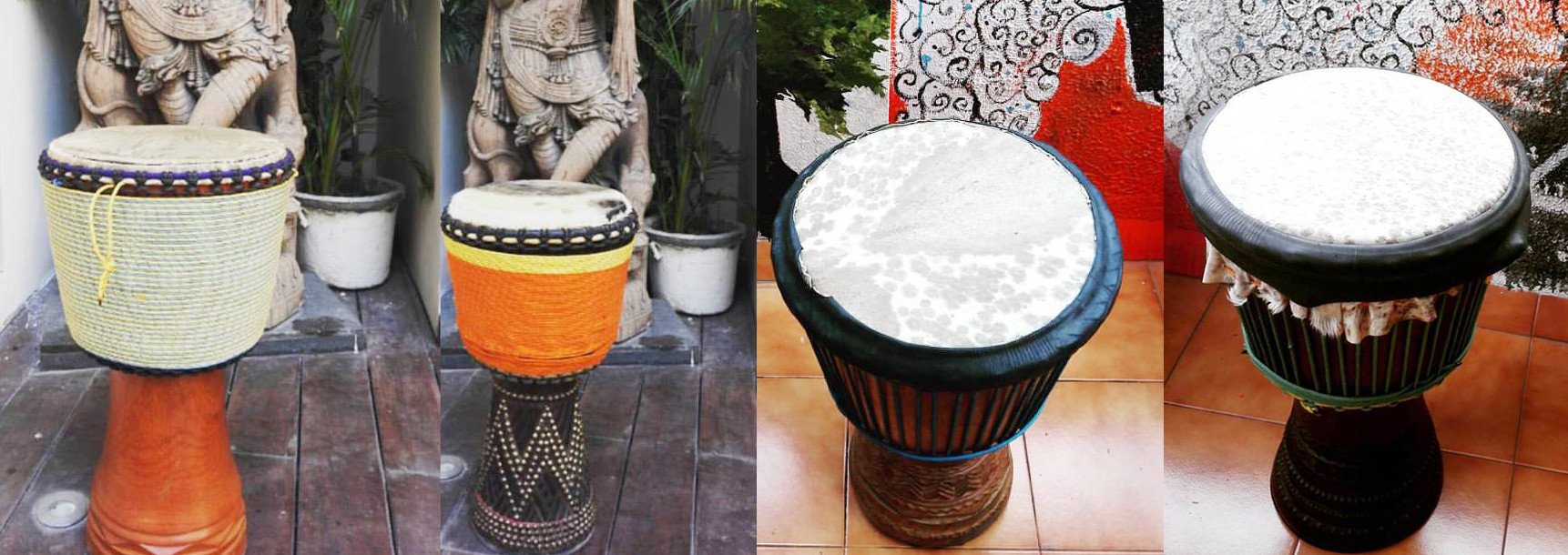The Djembe: A goblet shaped instrument that hails from the western part of Africa and widely used by African Drumming Groups and tribes. This drum is said to have originated in the 13th century and, since then, has gone through a lot of changes to develop into what it is today.
The raw materials required to make a djembe: hardwood (preferably hand carved with one single piece of wood), goat skin (there are substitutes for this available in the market today), 3 or sometimes 4 metal rings cut to the specifications of the drum (2 or 3 for the top and 1 for the bottom) and finally, (no stretch) rope. Once one had these raw materials, traditionally, a drum would be made with nothing but a knife and a strong wooden stick as the rope-tightening tool.
Today, there are many machines that have been engineered by maverick and meticulous minds to make djembe-making a less physically gruelling exercise which also makes it easily available for anyone who wants to get their hands on one for a variety of uses from Djembe Circles to individuals wanting to learn the instrument.

I learned how to make a djembe by observing many djembe makers in my travels to study the instrument. After many trials and errors, I have developed my own style of making these beautiful drums. The experience of putting your drum together with your own hands helps truly understand the unique spirit of each drum. Each wooden shell speaks to you in a different way. It is a meditative experience that requires patience, precision and strength.
Here are some of the djembes I have made:

Some of the hardwoods used for djembes are: Lenke, Balaphon, Kolokolo, Dougoura and so on. I am yet to be able to find their corresponding kinds of wood available in India. So far, I have identified teak and mahogany.
There are a lot of amazing companies that make traditional djembes to be used for Djembe Circles or by musicians. Here are links to some of them:
For non traditional djembes made in India (both wooden and fibre) please visit:
And most importantly, after you have bought your djembe, you will need Djembe Lessons or classes to learn traditional djembe. Feel free to get in touch with us to know more about a djembe class near you.
Come. Drum. Be One.
Varun Venkit

Varun is the founder and director of Taal Inc.
The visionary behind the motto
Come. Drum. Be One.
To read more about him Click Here
